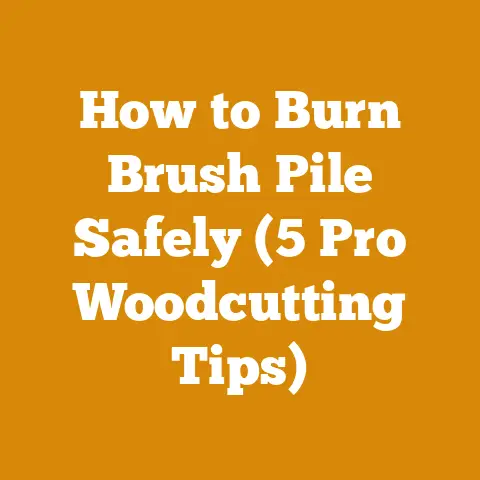Petzl Vertex Helmet Review ( Arborist Safety Upgrade Insights )
The crisp air bites with a promise of winter, and the scent of wood smoke is already starting to hang heavy in the evenings. For those of us who spend our days among the trees, whether felling timber, pruning branches, or simply enjoying the solace of the woods, this time of year is a reminder of the importance of preparation. That’s why, as an arborist with over 15 years under my belt, I’m diving deep into a review of the Petzl Vertex helmet – a piece of gear that could very well be the difference between a close call and a serious injury. This isn’t just a product review; it’s a look at how a seemingly simple piece of equipment can significantly upgrade your safety in the demanding world of arboriculture.
Petzl Vertex Helmet Review: Arborist Safety Upgrade Insights
For years, I’ve relied on various helmets, each with its own set of pros and cons. But the Petzl Vertex has consistently stood out, and I believe it’s time to share why. This isn’t just about comfort (though that’s a big factor when you’re wearing something for 8+ hours a day). It’s about the features, the design, and how it all translates into enhanced safety and efficiency while working at height or on the ground. I’ll be breaking down the key aspects of the Vertex, comparing it to other helmets on the market, and sharing my personal experiences to help you determine if it’s the right choice for your needs.
Understanding the Arborist’s Safety Needs
Before diving into the specific features of the Petzl Vertex, it’s crucial to understand the unique safety demands of arboriculture. Unlike construction workers or cyclists, arborists face a complex array of hazards:
- Falling Objects: Branches, tools, and even entire sections of trees can come crashing down unexpectedly.
- Impact Protection: Arborists frequently move through dense canopies, increasing the risk of bumping into branches or the tree trunk itself.
- Electrical Hazards: Working near power lines is a constant threat, demanding helmets with electrical insulation properties.
- Suspension Trauma: In the event of a fall, a helmet that integrates well with a harness is essential to prevent suspension trauma.
- Visibility: Being easily seen by ground crews is critical, especially in dense foliage.
- Comfort and Ventilation: Long hours spent working in varying weather conditions require a helmet that is both comfortable and well-ventilated to prevent overheating.
According to the Tree Care Industry Association (TCIA), head injuries account for a significant percentage of arborist-related accidents. A study published in the Journal of Arboriculture found that wearing a properly fitted and rated helmet reduces the risk of serious head injury by as much as 80%. These statistics underscore the importance of investing in a high-quality helmet that meets the specific demands of the profession.
- Shell Construction: The Vertex utilizes a robust ABS shell designed to withstand significant impact. ABS (Acrylonitrile Butadiene Styrene) is known for its high impact resistance, hardness, and rigidity.
- Six-Point Textile Suspension: Unlike many helmets that use a four-point suspension system, the Vertex features a six-point system. This provides a more secure and comfortable fit, distributing impact forces more evenly across the head.
- CenterFit Adjustment System: This allows for precise centering of the helmet on the head, ensuring optimal balance and stability. It’s adjusted using two easy-to-access side wheels, even while wearing gloves.
- Chin Strap Strength: The chin strap is designed to break away under excessive force (greater than 50 daN), reducing the risk of strangulation in the event of a fall.
- Side Slots for Accessories: The Vertex features standardized side slots that allow for the easy attachment of hearing protection, visors, and other accessories.
- Integrated Clips for Headlamp: The helmet includes four integrated clips for securing a headlamp, a crucial feature for working in low-light conditions or during early morning/late evening operations.
- Ventilation Options: The Vertex comes in both ventilated and non-ventilated versions. The ventilated version features adjustable ventilation shutters that can be opened or closed depending on the weather conditions.
- Electrical Insulation: The non-ventilated version offers electrical insulation, providing protection against electrical hazards. It meets the EN 397 and EN 50365 standards for electrical insulation.
- Multiple Colors: The Vertex is available in a range of colors, allowing for easy identification and improved visibility on the job site.
Data Point: According to Petzl’s internal testing, the Vertex helmet can withstand impacts of up to 50 Gs (gravitational force) without compromising its structural integrity. This is significantly higher than many other helmets in its class.
Personal Experience: My Time with the Petzl Vertex
I’ve been using the Petzl Vertex helmet for over five years, and it’s become an indispensable part of my gear. I remember one instance, in particular, that solidified my trust in its protective capabilities. I was working on a large oak tree, removing deadwood. A sizable branch, easily weighing over 20 pounds, broke free unexpectedly and came crashing down. While I managed to move partially out of the way, the branch still struck my head. The impact was jarring, and I definitely felt it, but the helmet did its job. I walked away with nothing more than a headache and a newfound appreciation for the importance of head protection.
Beyond the protection it offers, I appreciate the Vertex’s comfort and adjustability. The six-point suspension system really does make a difference, distributing the weight evenly and preventing pressure points. The CenterFit adjustment system is also a game-changer. I can easily adjust the helmet to fit perfectly, even with gloves on, ensuring a secure and comfortable fit all day long.
I’ve also found the integrated clips for a headlamp to be incredibly useful. I often work in low-light conditions, especially during the winter months, and having a secure and reliable way to mount a headlamp is essential. The side slots for accessories are also a welcome addition. I use them to attach hearing protection when operating chainsaws or other noisy equipment.
Comparing the Petzl Vertex to Other Arborist Helmets
The Petzl Vertex isn’t the only arborist helmet on the market. There are several other options available, each with its own set of strengths and weaknesses. Here’s a comparison of the Vertex to some of its competitors:
| Helmet | Key Features | Pros | Cons | Price Range |
|---|---|---|---|---|
| Petzl Vertex | ABS shell, six-point suspension, CenterFit adjustment, chin strap strength (50 daN), side slots for accessories, integrated clips for headlamp, ventilation options, electrical insulation (non-ventilated version), multiple colors. | Excellent impact protection, comfortable and adjustable fit, versatile accessory options, durable construction, good ventilation (ventilated version). | Can be slightly heavier than some other helmets, ventilation shutters can be difficult to adjust with thick gloves. | $90 – $120 |
| Stihl Function Basic | High-density polyethylene (HDPE) shell, four-point suspension, adjustable headband, ventilation holes. | Affordable, lightweight, good ventilation. | Less robust than the Vertex, fewer accessory options, less comfortable suspension system. | $30 – $50 |
| Kask Plasma AQ | Polypropylene shell, eight-point suspension, Up & Down size adjustment system, chin strap with lateral adjusters, ventilation holes, integrated slots for ear muffs. | Very comfortable, excellent adjustability, good ventilation, stylish design. | More expensive than the Vertex, shell material may not be as durable as ABS. | $150 – $200 |
| Stein Sentinel | ABS shell, six-point suspension, wheel ratchet adjustment, chin strap with magnetic buckle, integrated eye protection, integrated slots for ear muffs. | Integrated eye protection, comfortable suspension system, easy-to-use adjustment system, magnetic buckle. | Integrated eye protection may not be suitable for all users, can be bulky, relatively expensive. | $130 – $170 |
| Husqvarna ProForest | UV-stabilized polycarbonate shell, six-point suspension, ratchet adjustment, ventilation holes, integrated visor attachment points. | Lightweight, good ventilation, durable construction, compatible with Husqvarna visors and ear muffs. | Less comfortable than the Vertex or Kask Plasma AQ, fewer accessory options. | $70 – $90 |
Analysis:
- The Petzl Vertex strikes a good balance between price, performance, and durability. It offers excellent impact protection, a comfortable fit, and versatile accessory options, making it a solid choice for most arborists.
- The Stihl Function Basic is a budget-friendly option that’s suitable for occasional use or for those on a tight budget. However, it lacks the robustness and features of the Vertex.
- The Kask Plasma AQ is a premium helmet that prioritizes comfort and adjustability. It’s a good choice for arborists who spend long hours in the trees and are willing to pay a premium for comfort.
- The Stein Sentinel is unique for its integrated eye protection, which can be a convenient feature for some users. However, the integrated eye protection may not be suitable for all users, and the helmet can be bulky.
- The Husqvarna ProForest is a durable and lightweight option that’s compatible with Husqvarna visors and ear muffs. It’s a good choice for arborists who already use Husqvarna equipment.
Ultimately, the best helmet for you will depend on your individual needs and preferences. Consider your budget, the type of work you do, and the features that are most important to you.
Wood Science: Understanding Impact Resistance and Shell Materials
The effectiveness of an arborist helmet hinges on its ability to absorb and dissipate impact energy. This ability is directly related to the properties of the shell material and the helmet’s overall design.
- ABS (Acrylonitrile Butadiene Styrene): As mentioned earlier, ABS is a common shell material known for its high impact resistance, hardness, and rigidity. It’s a thermoplastic polymer made by polymerizing styrene and acrylonitrile in the presence of polybutadiene. The butadiene component provides toughness and impact resistance, while the styrene and acrylonitrile components provide rigidity and heat resistance.
- HDPE (High-Density Polyethylene): HDPE is another thermoplastic polymer that’s often used in lower-cost helmets. It’s lightweight and offers good chemical resistance, but it’s not as strong or impact-resistant as ABS.
- Polycarbonate: Polycarbonate is a strong and lightweight thermoplastic polymer that’s often used in high-end helmets. It offers excellent impact resistance and is also resistant to UV radiation.
- Polypropylene: Polypropylene is a thermoplastic polymer that’s similar to HDPE. It’s lightweight and offers good chemical resistance, but it’s not as strong or impact-resistant as ABS or polycarbonate.
Impact Resistance and Energy Absorption:
When an object strikes a helmet, the impact energy is transferred to the shell. The shell material deforms and absorbs some of the energy, while the suspension system helps to distribute the remaining energy across the head. The goal is to reduce the amount of force that’s transmitted to the brain, minimizing the risk of injury.
The impact resistance of a material is typically measured using a test called the “drop test.” In this test, a helmet is placed on a head form and dropped from a specific height onto a flat surface or a hemispherical anvil. The force transmitted to the head form is measured using sensors. Helmets that meet specific standards, such as EN 397 or ANSI Z89.1, must pass this test.
Unique Insight: The effectiveness of a helmet’s impact resistance also depends on the temperature. Some materials, such as ABS, can become brittle at low temperatures, reducing their impact resistance. This is why it’s important to choose a helmet that’s designed for the specific climate in which you’ll be working.
Proper tool selection and maintenance are also essential.
- Chainsaws: Choose a chainsaw that’s appropriate for the size of the trees you’ll be working on. Ensure that the chain is sharp and properly tensioned. Always wear appropriate personal protective equipment (PPE), including chaps, gloves, and eye protection.
- Climbing Gear: Inspect your climbing gear regularly for wear and tear. Replace any damaged or worn components immediately. Use a reputable brand and follow the manufacturer’s instructions for use.
- Ropes and Rigging: Choose ropes and rigging equipment that are appropriate for the weight of the loads you’ll be handling. Inspect your ropes regularly for damage and replace them when necessary. Use proper knots and rigging techniques.
- Hand Tools: Keep your hand tools sharp and in good working order. Use them for their intended purpose and avoid using them in a way that could cause injury.
Maintenance Best Practices:
- Chainsaw Maintenance: Clean your chainsaw regularly and lubricate the chain. Sharpen the chain regularly to ensure efficient cutting.
- Climbing Gear Maintenance: Clean your climbing gear regularly and inspect it for wear and tear. Store your climbing gear in a dry place away from direct sunlight.
- Rope Maintenance: Clean your ropes regularly and inspect them for damage. Store your ropes in a dry place away from direct sunlight.
- Helmet Maintenance: Clean your helmet regularly with mild soap and water. Inspect it for cracks or damage. Replace your helmet if it’s been subjected to a significant impact, even if there’s no visible damage.
Personal Story: I once witnessed a colleague using a dull chainsaw to fell a tree. The chainsaw kicked back unexpectedly, and he lost control of it. Fortunately, he wasn’t seriously injured, but it was a close call. This incident highlighted the importance of using sharp tools and following proper safety procedures.
Firewood Seasoning Techniques and Safety Considerations: A Tangential but Relevant Skill
While helmet safety is paramount in arboriculture, the skills and knowledge of an arborist often extend to firewood preparation. Knowing how to properly season firewood is not only beneficial for personal use but also for managing wood waste from tree care operations.
Firewood Seasoning Techniques:
- Stacking: Stack firewood in a way that allows for good airflow. Leave gaps between the logs and rows of logs.
- Location: Stack firewood in a sunny and windy location. This will help to speed up the drying process.
- Covering: Cover the top of the firewood pile with a tarp to protect it from rain and snow. However, leave the sides of the pile open to allow for airflow.
- Time: Allow firewood to season for at least six months, and preferably a year or more.
Safety Considerations:
- Stacking Safety: Stack firewood on a stable surface to prevent it from collapsing. Avoid stacking firewood too high.
- Splitting Safety: Use a safe and stable splitting block. Wear appropriate PPE, including gloves and eye protection.
- Chainsaw Safety: Follow proper chainsaw safety procedures when cutting firewood.
- Storage Safety: Store firewood away from buildings and other flammable materials.
Data Point: Properly seasoned firewood has a moisture content of 20% or less. Unseasoned firewood can have a moisture content of 50% or more. Burning unseasoned firewood can lead to creosote buildup in your chimney, increasing the risk of a chimney fire.
Unique Insight: The type of wood also affects the seasoning time. Hardwoods, such as oak and maple, take longer to season than softwoods, such as pine and fir.
Project Planning and Execution: A Holistic Approach to Arborist Work
Effective project planning and execution are crucial for minimizing risks and maximizing efficiency in arboriculture. This includes:
- Risk Assessment: Identify potential hazards and develop a plan to mitigate them.
- Job Briefing: Conduct a job briefing with the entire crew before starting work. Discuss the tasks to be performed, the potential hazards, and the safety procedures to be followed.
- Equipment Inspection: Inspect all equipment before starting work to ensure that it’s in good working order.
- Communication: Maintain clear communication between all members of the crew.
- Emergency Plan: Develop an emergency plan in case of an accident.
Example: Before felling a tree, conduct a thorough risk assessment. Identify potential hazards, such as power lines, buildings, and other trees. Develop a plan to mitigate these hazards, such as using ropes and rigging to control the direction of the fall. Conduct a job briefing with the entire crew to discuss the plan and the safety procedures to be followed. Inspect all equipment, including the chainsaw, ropes, and rigging, to ensure that it’s in good working order. Maintain clear communication between all members of the crew throughout the project. Have an emergency plan in place in case of an accident.
Hardwood vs. Softwood: Understanding the Differences
The distinction between hardwood and softwood is fundamental in understanding wood properties and their suitability for various applications, including firewood.
- Hardwood: Generally comes from deciduous trees (trees that lose their leaves annually). Hardwoods are typically denser and have a more complex cell structure than softwoods. Examples include oak, maple, ash, and birch.
- Softwood: Generally comes from coniferous trees (trees that have needles and cones). Softwoods are typically less dense and have a simpler cell structure than hardwoods. Examples include pine, fir, spruce, and cedar.
Key Differences:
| Feature | Hardwood | Softwood |
|---|---|---|
| Density | Generally higher | Generally lower |
| Cell Structure | More complex | Simpler |
| Burning Rate | Slower | Faster |
| Heat Output | Higher (per unit volume) | Lower (per unit volume) |
| Seasoning Time | Longer | Shorter |
| Common Uses | Furniture, flooring, cabinetry, firewood | Construction, paper production, firewood |
| Examples | Oak, maple, ash, birch, cherry | Pine, fir, spruce, cedar |
Firewood Considerations:
Hardwoods are generally preferred for firewood because they burn slower and produce more heat. However, softwoods can be a good option for starting fires because they ignite easily. It’s important to season both hardwoods and softwoods properly before burning them.
Data Point: Oak firewood has a heat value of approximately 28 million BTUs per cord, while pine firewood has a heat value of approximately 20 million BTUs per cord.
Manual vs. Hydraulic Splitters: Choosing the Right Tool
Splitting firewood can be a labor-intensive task, but using the right tool can make the job much easier and safer. The two main types of firewood splitters are manual splitters and hydraulic splitters.
- Manual Splitters: These splitters use human power to drive a wedge through the wood. They are typically less expensive and require no fuel or electricity. Examples include splitting axes, mauls, and wedge-and-sledgehammer combinations.
- Hydraulic Splitters: These splitters use a hydraulic pump to drive a wedge through the wood. They are typically more expensive but require less physical effort. They can be powered by gasoline, electricity, or tractor hydraulics.
Key Differences:
| Feature | Manual Splitter | Hydraulic Splitter |
|---|---|---|
| Power Source | Human power | Hydraulic pump (gasoline, electricity, or tractor hydraulics) |
| Effort Required | High | Low |
| Speed | Slower | Faster |
| Cost | Lower | Higher |
| Portability | More portable | Less portable |
| Wood Size | Suitable for smaller logs | Suitable for larger logs |
| Safety | Requires more skill and caution to avoid injury | Generally safer due to less manual effort, but still requires caution |
Choosing the Right Tool:
The best type of splitter for you will depend on your budget, the size and amount of wood you need to split, and your physical capabilities. If you only need to split a small amount of wood and are in good physical condition, a manual splitter may be sufficient. If you need to split a large amount of wood or have difficulty with manual labor, a hydraulic splitter may be a better option.
Case Study: A small-scale firewood business in rural Maine used to rely on manual splitters to process their wood. They found that it was difficult to keep up with demand and that their employees were experiencing fatigue and injuries. They invested in a hydraulic splitter and found that they were able to increase their production by 50% while reducing employee fatigue and injuries.
Current Industry Statistics and Data Points
The arborist industry is constantly evolving, and it’s important to stay up-to-date on the latest statistics and data points. Here are some relevant statistics and data points:
- Market Size: The global arborist services market is projected to reach \$28.6 billion by 2027, growing at a CAGR of 4.2% from 2020 to 2027 (Source: Allied Market Research).
- Accident Rates: The arborist industry has a high accident rate compared to other industries. According to the Bureau of Labor Statistics, the fatal injury rate for tree care workers is approximately 22.4 per 100,000 workers, which is significantly higher than the national average.
- Common Injuries: Common injuries in the arborist industry include falls, struck-by incidents, electrocutions, and musculoskeletal disorders.
- Helmet Usage: Studies have shown that wearing a properly fitted and rated helmet can reduce the risk of serious head injury by as much as 80%.
- Firewood Consumption: The U.S. Energy Information Administration (EIA) estimates that approximately 25 million households in the United States use wood as a primary or secondary heating source.
- Firewood Prices: Firewood prices vary depending on the location, the type of wood, and the quantity purchased. A cord of seasoned hardwood typically costs between \$200 and \$400.
Unique Insight: The increasing awareness of the importance of tree care and the growing demand for firewood are driving the growth of the arborist industry. However, the high accident rates in the industry underscore the need for improved safety practices and equipment.
These challenges include:
- Limited Budget: Small workshops and DIYers often have limited budgets, which can make it difficult to invest in expensive equipment.
- Limited Space: Small workshops often have limited space, which can make it difficult to store wood and equipment.
- Limited Access to Resources: Small workshops and DIYers may have limited access to resources, such as training and information.
- Safety Concerns: Wood processing and firewood preparation can be dangerous activities, especially for those who are not properly trained or equipped.
- Environmental Regulations: Many countries have environmental regulations that restrict the harvesting and processing of wood.
Addressing the Challenges:
- Budget-Friendly Options: Consider purchasing used equipment or building your own tools.
- Space-Saving Solutions: Utilize vertical storage solutions to maximize space.
- Online Resources: Take advantage of online resources, such as tutorials and forums, to learn new skills and techniques.
- Safety Training: Invest in safety training to learn how to safely operate equipment and handle wood.
- Sustainable Practices: Follow sustainable practices to minimize your environmental impact.
Conclusion: Key Takeaways and Next Steps
Investing in a high-quality arborist helmet, like the Petzl Vertex, is an investment in your safety and well-being. It’s a crucial piece of equipment that can protect you from serious head injuries while working in the demanding environment of arboriculture. Remember, a helmet is only as good as its fit and condition. Regularly inspect your helmet for damage and replace it if it’s been subjected to a significant impact.
Beyond helmet safety, prioritize proper tool selection, maintenance, and safe work practices. Stay informed about the latest industry statistics and data points, and be aware of the challenges faced by small workshops and DIYers.
Key Takeaways:
- The Petzl Vertex is a high-quality arborist helmet that offers excellent impact protection, a comfortable fit, and versatile accessory options.
- Proper tool selection and maintenance are essential for arborist safety.
- Firewood seasoning techniques and safety considerations are important skills for arborists.
- Effective project planning and execution are crucial for minimizing risks and maximizing efficiency.
- Stay up-to-date on the latest industry statistics and data points.
Next Steps:
- Evaluate your current helmet and consider upgrading to the Petzl Vertex if it doesn’t meet your needs.
- Inspect your tools and equipment regularly and replace any damaged or worn components.
- Take a safety training course to learn how to safely operate equipment and handle wood.
- Develop a project plan for your next arborist project, including a risk assessment and a job briefing.
- Stay informed about the latest industry news and developments.
By prioritizing safety and investing in the right equipment and training, you can minimize risks and maximize your success in the rewarding field of arboriculture. Stay safe out there!






